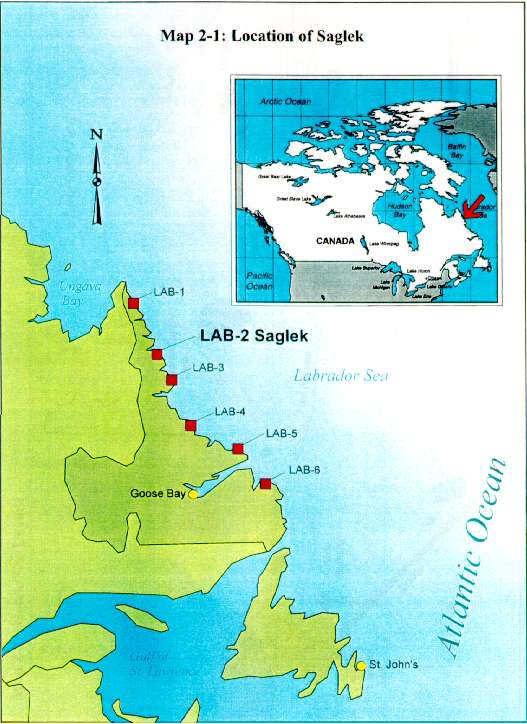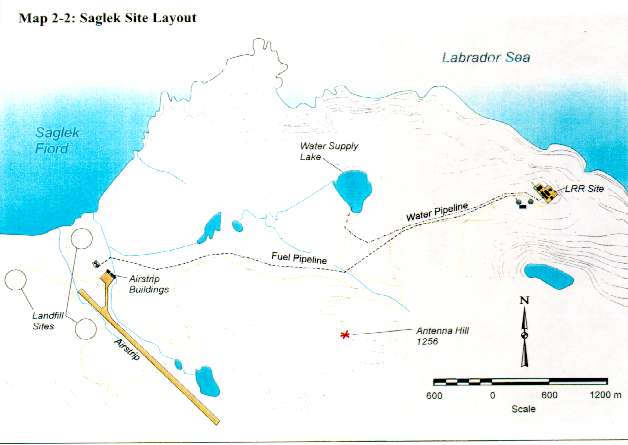Saglek, Labrador
Description of study site
The North Warning System currently runs a long range radar station at Saglek, Labrador, with the designation LAB-2. The site of the current station is located on what used to be a USAF manned military radar station that made up part of the Pinetree Line at the height of the Cold War. Prior to construction of the new site, structures remaining from the old station were demolished, burned and then buried on site. The old site was the largest of the East Coast stations and consisted of a radar station, two antenna sites, an airport and a beach landing area.
When the old site was demolished and the site cleaned up, approximately 100 m3 of PCB-contaminated material was removed from the site and transported to Goose Bay for destruction at an incineration facility. Previous studies of the site conducted by the Environmental Sciences Group in 1991, 1993 and 1996, revealed more than 1300 m3 of soil contaminated with PCBs in excess of the CEPA criterion. The main concentration of this contamination was located on what has become known as Antenna Hill (Map 2-1 and Map 2-2 above).
Antenna Hill previously housed a set of large tropospheric antennae and some support structures that contained a variety of electrical equipment. The past location of the antennae and structures is indicated by large concrete pads which must have supported them. It is in the vicinity of the largest of these concrete foundations that approximately 1200 m3 of the PCB contaminated soil (in excess of 50 ppm) is located. The concrete foundation is clearly visible in a photograph of the hill,Photograph 2-1. Antenna Hill was chosen as the site for the scaled up field trials that were carried out during this research.
In addition to "CEPA soils" there is also approximately 1130 m3 of soil containing between 5 and 50 ppm PCBs and another 3270 m3 of soil containing between 1 and 5 ppm PCBs. Options for disposal of these lesser contaminated soils may include burial in an on-site engineered land fill. Should a portion of the "CEPA soils" have PCB concentrations reduced below that of the 50 ppm criterion, they could be treated in the same manner as the lesser contaminated soils at significantly reduced costs.
Geographically, Saglek is typical of contaminated sites in the north and a prime candidate for a mobile, on-site, "low tech" PCB remediation technology. The only ways to reach Saglek are by aircraft or by ship. In this respect Saglek is at an advantage over many arctic sites as the air strip is paved and can support larger aircraft than most others, which only have gravel airstrips suitable for Twin Otters. Saglek is also relatively far south compared to other sites, making sea lifts to the site a somewhat simple, but nevertheless expensive, task. At other locations, transportation of equipment to and from the sites is less reliable and expensive due to the greater distances and the presence of ice. The ideal treatment apparatus is one that can be transported on a small aircraft, yet not so valuable that it could not be left over the winter at a remote arctic site.

